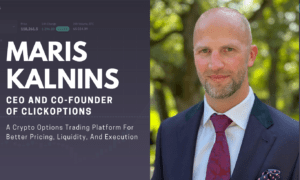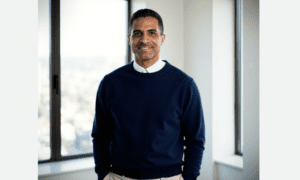In this exclusive TechBullion interview, financial examiner and risk expert Ismatjon Hoshimov discusses how predictive risk models can serve as early warning systems to prevent banking crises. Drawing from his experience at the National Bank of Tajikistan and collaboration with the European Central Bank, Hoshimov explains how stress testing across macroeconomic scenarios can identify vulnerabilities in bank portfolios before problems escalate. He highlights the need for accurate data, skilled analysts, and institutional commitment, arguing that dynamic, forward-looking supervision is essential for building resilient financial systems in both emerging and developed markets.
TechBullion: Mr. Hoshimov, thank you for joining us. Let’s start with your background. How did your experience in banking supervision lead to the development of predictive risk models?
Ismatjon Hoshimov: Thank you for having me. My background is in financial supervision, and I served for several years at the National Bank of Tajikistan, where I led on-site inspections of commercial banks. During my tenure, I worked closely with technical advisors from the European Central Bank (ECB) on a broader reform effort to modernize our risk-based supervision framework. One of the key initiatives we implemented was a predictive risk model—designed to provide early warning indicators of banking distress based on real economic and financial data.
TechBullion: Could you walk us through how this predictive model works in practice?
Hoshimov: Absolutely. The model we developed relies on a multi-scenario simulation structure. At its core, it is built around stress testing techniques that simulate bank performance under different macroeconomic environments: Base, Pessimistic, and Optimistic scenarios. For example, in the Base scenario, we assume stable GDP growth, moderate inflation, and conservative loan default rates. In the Pessimistic scenario, we incorporate variables like rising unemployment, currency depreciation, and systemic liquidity shortages. In the Optimistic scenario, we account for above-trend growth and improved credit performance.
Each bank is evaluated against these scenarios using key financial metrics such as capital adequacy, return on equity, loan quality, and sectoral exposure. The model then flags institutions whose performance is projected to deteriorate significantly under stress, enabling early supervisory intervention.
TechBullion: This sounds remarkably relevant given the recent failures in U.S. banking—such as the collapse of Silicon Valley Bank in 2023. Could such a model have made a difference?
Hoshimov: I believe it could have helped, yes. One of the main issues with SVB was asset-liability mismatch and overexposure to interest rate-sensitive securities. A well-calibrated predictive model would have picked up signals such as declining net interest margins, concentration risks in funding sources, and excessive duration mismatch. Supervisors could have run adverse interest rate scenarios to see how those factors affected liquidity and capital buffers.
The beauty of predictive models is that they don’t just focus on present compliance—they assess how risk positions might evolve under future conditions. That shift from static to dynamic supervision is critical for preventing modern banking crises.

TechBullion: What technology or data infrastructure is needed to implement a predictive risk model like this?
Hoshimov: The foundation is accurate, timely, and granular data—ideally collected monthly or quarterly from financial institutions and macroeconomic agencies. You need a data warehouse that integrates bank-level and economy-wide data, plus analytics tools capable of econometric modeling and simulation—R, Python, or EViews are commonly used in central banks.
Machine learning can be layered on top to enhance pattern recognition and anomaly detection, though we primarily used traditional econometrics and autoregressive models. For implementation, the supervisory authority also needs trained analysts who understand both quantitative modeling and the institutional behavior of banks. The technology is important, but human expertise is irreplaceable.
TechBullion: In your view, how ready are most emerging-market regulators to adopt such a model?
Hoshimov: Many are more ready than we think—but often lack the internal coordination or external support to act. In our case, we benefited from ECB and IMF cooperation, which helped us fast-track reforms. But even without outside support, regulators can start small by building an internal risk dashboard using public and supervisory data.
In fact, some of the best-performing models start with just a few variables: non-performing loans, capital adequacy, and credit growth relative to GDP. Over time, this can evolve into a robust, integrated system. The most important step is institutional commitment—predictive supervision has to become part of the organizational culture, not just an occasional project.
TechBullion: How do you see this approach being applied in the U.S., where regulatory fragmentation is often cited as a challenge?
Hoshimov: The U.S. system has its own complexities, but also unique advantages. Agencies like the Federal Reserve and FDIC already conduct stress tests for large institutions. The gap tends to be in the oversight of mid-size and regional banks, where models like ours could add real value.
A predictive framework could act as a complement to the CAMELS rating system, providing forward-looking diagnostics in addition to traditional assessments. With the recent regional bank turmoil, there’s a strong case for enhancing early warning capabilities—especially given the interconnectedness of liquidity, digital banking behavior, and market sentiment.

TechBullion: What’s your message to policymakers and regulators reading this?
Hoshimov: The next crisis is always different, but the warning signs are often visible if we know where to look. Predictive risk models give us the tools to monitor those signs systematically, rather than rely on intuition or lagging indicators. They won’t prevent every failure, but they can drastically reduce the cost of inaction.
More than technology, this is about mindset. We need to move from reactive supervision to proactive oversight, from compliance audits to behavioral modeling. That is the future of stable and resilient banking systems—not just in emerging markets, but everywhere.
TechBullion: Thank you, Mr. Hoshimov. This has been a fascinating and important discussion.
Hoshimov: Thank you. I appreciate the opportunity to share this work.
Ismatjon Hoshimov is a financial examiner, regulatory strategist, and researcher specializing in risk-based supervision frameworks. He previously worked with the National Bank of Tajikistan and collaborated with the European Central Bank on predictive modeling initiatives. He holds a Master of Science in International Cooperation Policy from Ritsumeikan Asia Pacific University, Japan.



































